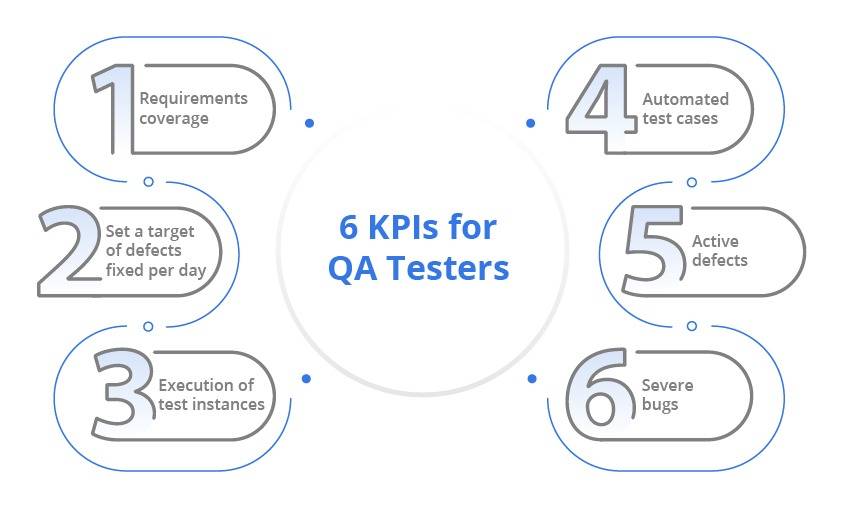With many moving parts of a testing project, you may find yourself swamped with work and yet answering for delays and slipped defects. As a tester (both beginner and professional), measuring software quality is often a huge challenge.
To thrive in the competitive QA market, testers must define Key Performance Indicators (KPIs) to gauge the progress of software testing in terms of test coverage, speed of execution, and defect status.
Testers are now more meticulous about quality over quantity. The end goal is not picking out bugs, but to have an excellent end-user experience.
The often-heard quote of W. Edwards Deming, a quality-control leader, aptly captures the importance of KPIs:
“We cannot control things which we cannot measure.”
With the following tried and tested KPIs for QA professionals, you can measure your testing efforts to achieve quality excellence with every product:

1. Requirements coverage
This KPI measures the number of tests associated with a user story or requirement. A test manager assures that all the feature requirements link with their relative test cases and vice versa. The practice ensures that all requirements have a sufficient number of tests.
As a test manager, you can supervise this KPI to trace the total number of tests assigned against requirements for an optimized testing process.
2. Set a target of defects fixed per day
Keep an eye on how quickly the development team works to fix the issues you have reported. The KPI for QA testers allows you to keep track of total defects fixed per day as well as the efforts involved to correct a problem. The process assures that your production team is meeting the “norm” for fixing bugs and keeping the build going forward.
3. Execution of test instances
With this KPI, testers can measure the test execution speed at different points in time. The indicator suggests the total number of manual and automated tests executed on a daily/weekly basis. This allows testers to estimate the total time spent in test execution.
4. Automated test cases
This indicator tells the ratio of test cases automated versus the total sum of test cases. Technically, a higher automated test case ratio means that automated regression cycles will cover larger areas of the app — which increases the likelihood of trapping critical defects from the software delivery pipeline.
The percentage threshold for test automation is decided based on the extent of automation needed and the costs involved. For example, define the percentage of test cases you want to automate; increase/decrease considering your team’s resources, time, and other measurable factors.
5. Active defects
Defects that are not fixed and closed are called “Active Defects.” The KPI’s status can be new, open, or closed, but not verified. Test managers can set a KPI threshold for active defects, for example, 100 defects, 50 defects, or 25 defects. If the threshold value exceeds, you can initiate an urgent action. Keeping the level of the KPI value minimal for the smaller number of active defects adds a higher value to the end product.
6. Severe bugs
It is an excellent QA KPI that helps testers to define a threshold value for the number of severe bugs/defects in an app at a time. In case the threshold value of severe bugs exceeds the limit, you can launch an immediate action.
Before building the KPI, the testing team should have enough expertise in identifying severe defects correctly. It is necessary to use checks and balances when determining a defect’s gravity.
How can a good Test Management Tool help you?
If you have set software QA KPIs for your product, you must get your hands on a reliable test management tool. A test management app helps you to develop KPIs as you go, without additional reporting effort:
Personalized dashboards – Gives an instant view of essential metrics such as Test Execution, Defect Status, and more.
Bug Reports – These reports allow you to monitor all defect-related KPIs such as severity levels (high, medium, or low) and status (new, open, or closed). You can also share these bug reports with your team on a daily/weekly basis.
Requirement traceability – Perform end-to-end traceability on tests and bugs to find out what impact a change request may bring throughout the testing process.
A word of caution here: if not implemented carefully, the KPIs can derail you from the road to success. It is sometimes unnecessary to add all the KPIs to your project. Thus, it is important to choose the right KPIs, those that suit your needs.

























